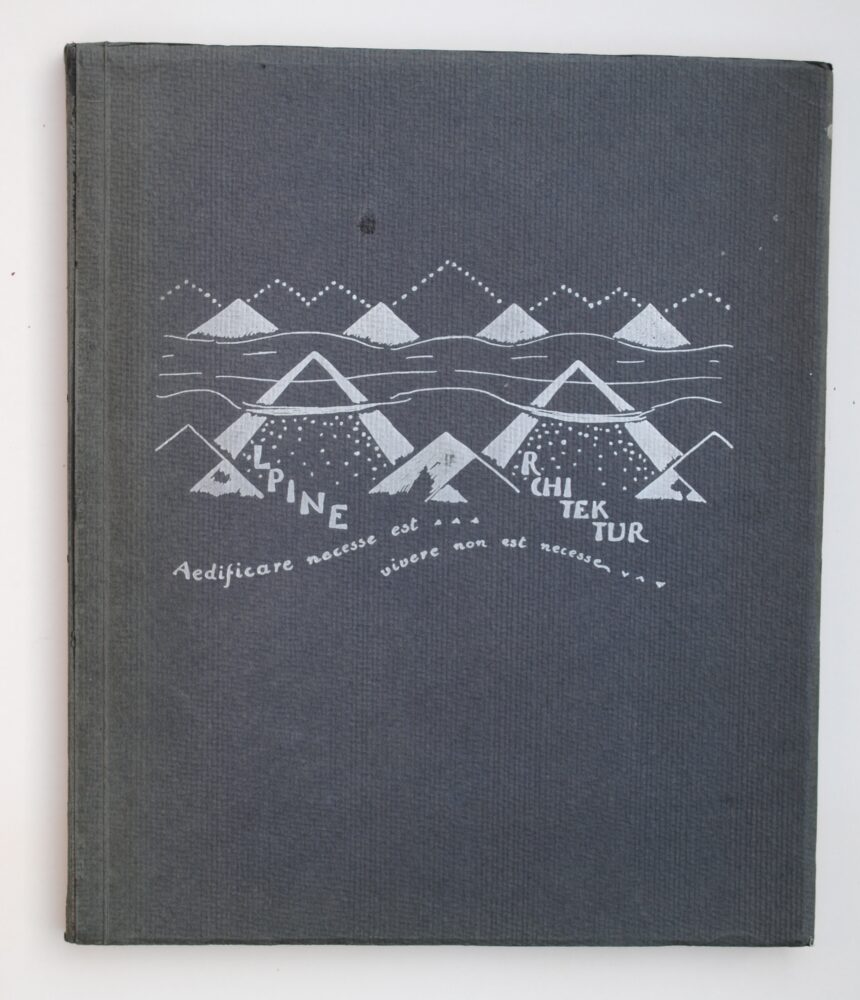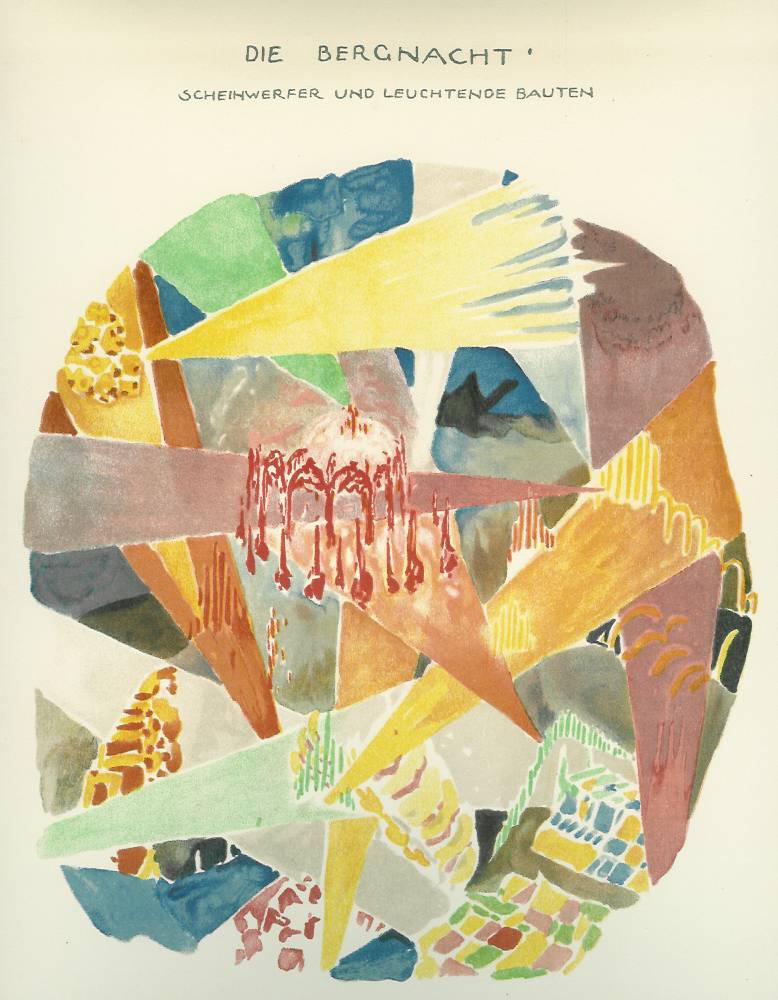Bruno Taut – Alpine Architektur
1919
soldTaut, Bruno.
Alpine Architektur. In 5 Teilen und 30 Zeichnungen.
Hagen im Folkwang-Verlag 1919.
Title, list of plates, 5 intertitle and twenty-two tipped-in monochrome plates and 8 colour plates.
39,5 x 33,5 cm. Original textured thick paper wrappers decorated and lettered in silver.
sold
This is Taut´s most exclusive and sought after work, which caused a great sensation when it appeared in 1919. The title page of this book carries the Latin tag Aedificare necesse est, vivere non est necesse, thereby making the polemical assertion that building is of greater import than life. Influenced by the anarchist poet Paul Scheerbart and by the proto-Expressionist climate of Berlin, Taut adopted anti-industrial, antimilitaristic stance both before and after the First World War. Alpine Architektur in conjunction with Die Stadtkrone, published in the same year, embodies the first full polemical statement of this position. Strongly affected by Scheerbart s visionary insistence that the emergence of a totally new spiritual, anarcho-socialism, the new liberated culture would depend upon building in nothing but colored glass. Taut advocated retreating to the Alps, as an unspoiled Nirvana in which to begin our civilization anew. This phantasmagoric ferro-vitreous vision was brought down to earth in Taut s more pragmatic Arbeitsrat für Kunst program (1919); a tract that would go on to provide the substance for the Bauhaus declaration of the same year. (Kenneth Frampton, in the Avery s Choice, # 335, p. 237).
„Der Erste Weltkrieg brachte die praktische Tätigkeit Tauts zum Erliegen. Nun schrieb und zeichnete Taut, nicht um der grausamen Realität zu entkommen, sondern um ihr eine positive Utopie entgegenzusetzen. So kann man Tauts schriftstellerisches und zeichnerisches Werk zwischen 1916 und 1920 auch keineswegs als Beschäftigungstherapie eines arbeitslosen Architekten ein-ordnen. Vielmehr ist es ein dichtes und eindrucksvolles künstlerisches Werk, angesiedelt zwischen Gesellschaftsutopie und Stadtplanung, zwischen Esoterik und Ästhetik, zwischen Gesamtkunstwerk und Zivilisationskritik, zwischen Glasmetaphorik und Abstraktion. Die dreißig Tafeln seiner ‘Alpinen Architektur’ zeichnete und kolorierte Taut in einer Manier, die sich Techniken der Comics Strips zunutze machte: zeitliche Sequenzen in der Abfolge der Darstellung, filmischer Wechsel von Detail und Totale, Maßstabsänderungen auf ein und demselben Blatt, Einbeziehung der Schrift in das Bild, Visualisierung der Schriftelemente (Farbe, Versalien, Strichstärke, rhythmische Zeilenverlauf).“ Architekturtheorie von der Renaissance bis zur Gegenwart, Köln 2003, pp.. 692ff. W. Pehnt, Die Architektur des Expressionismus, Stuttgart 1973, page. 84.
Overall a very nice copy, only the last 6 leaves with a crease.
Enclosed is the very rare publisher’s brochure (28 x 22,5 cm) for this edition and two other works by Bruno Taut.



